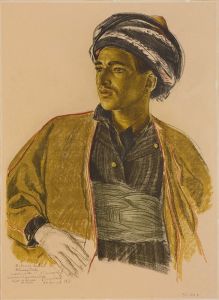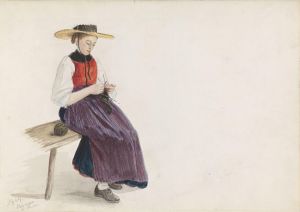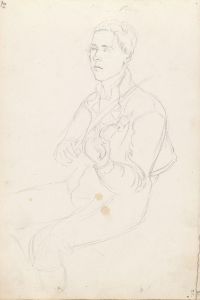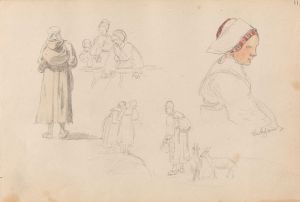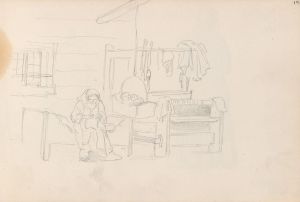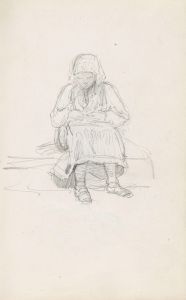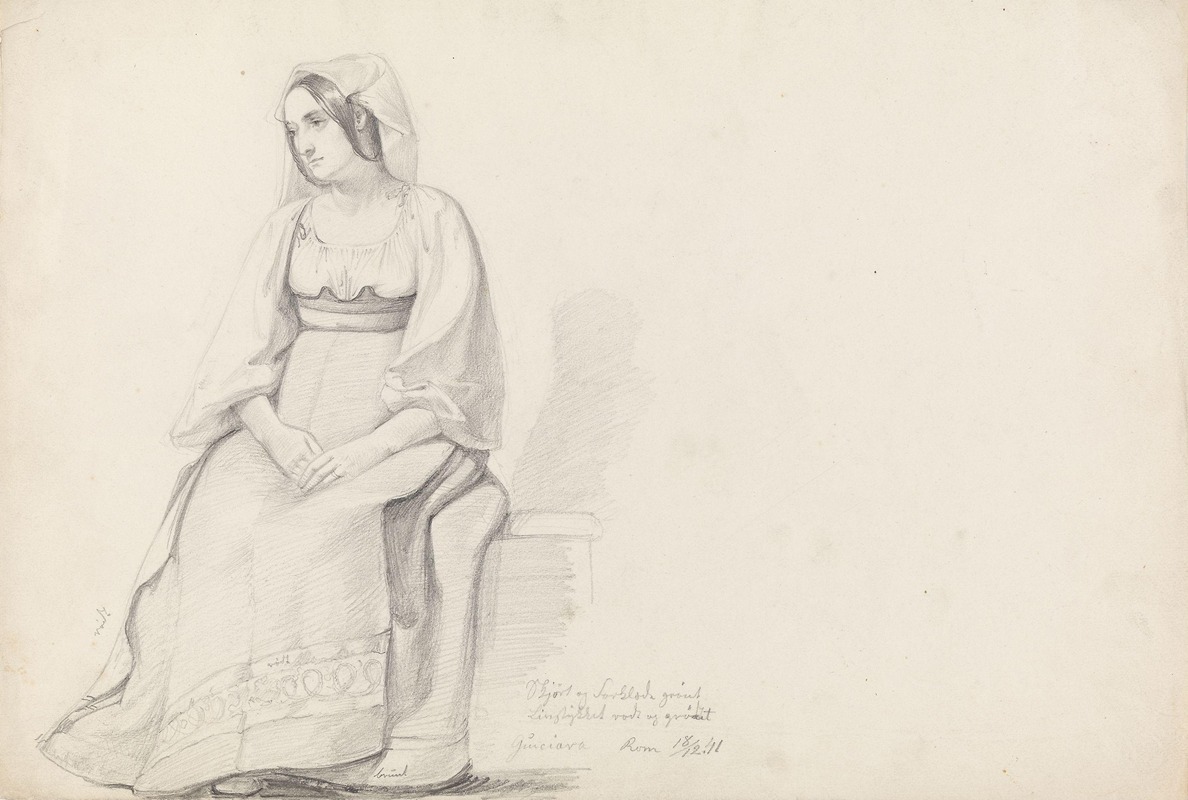
Ung kvinne, Roma
A hand-painted replica of Adolph Tidemand’s masterpiece Ung kvinne, Roma, meticulously crafted by professional artists to capture the true essence of the original. Each piece is created with museum-quality canvas and rare mineral pigments, carefully painted by experienced artists with delicate brushstrokes and rich, layered colors to perfectly recreate the texture of the original artwork. Unlike machine-printed reproductions, this hand-painted version brings the painting to life, infused with the artist’s emotions and skill in every stroke. Whether for personal collection or home decoration, it instantly elevates the artistic atmosphere of any space.
Adolph Tidemand was a prominent Norwegian painter in the 19th century, renowned for his depictions of Norwegian folk life and culture. His works often captured the essence of rural Norway, portraying its people, traditions, and landscapes with a keen eye for detail and a deep appreciation for the cultural heritage of his homeland. However, one of his lesser-known works, "Ung kvinne, Roma" (translated as "Young Woman, Rome"), diverges from his typical subject matter, offering a glimpse into a different aspect of his artistic exploration.
"Ung kvinne, Roma" is a painting that reflects Tidemand's experiences and observations during his travels outside of Norway. Like many artists of his time, Tidemand embarked on a journey through Europe, which was considered an essential part of an artist's education and development. This Grand Tour allowed him to study the works of the Old Masters and immerse himself in the diverse cultures and artistic traditions of the continent.
The painting "Ung kvinne, Roma" is believed to have been created during Tidemand's stay in Italy, a country that has long been a source of inspiration for artists due to its rich history, vibrant culture, and stunning landscapes. Rome, in particular, was a hub for artists, offering a wealth of artistic treasures and a vibrant community of fellow creatives.
In this work, Tidemand shifts his focus from the Norwegian countryside to the urban environment of Rome. The painting features a young woman, presumably Italian, depicted with a sense of grace and poise. Her attire and surroundings suggest a connection to the local culture, providing a snapshot of life in Rome during the 19th century. Tidemand's attention to detail is evident in the rendering of the woman's clothing and the subtle play of light and shadow, which adds depth and realism to the composition.
While "Ung kvinne, Roma" may not be as widely recognized as some of Tidemand's other works, it is a testament to his versatility as an artist and his ability to capture the essence of different cultures. The painting serves as a reminder of the broader European context in which Tidemand operated and the influences that shaped his artistic vision.
Adolph Tidemand's legacy is primarily associated with his contributions to Norwegian art, particularly his role in the National Romantic movement, which sought to celebrate and preserve the cultural identity of Norway. However, works like "Ung kvinne, Roma" highlight the breadth of his artistic interests and his capacity to engage with a variety of subjects and themes.
In summary, "Ung kvinne, Roma" by Adolph Tidemand is a painting that reflects the artist's experiences during his travels in Italy. It showcases his ability to capture the essence of a different culture while maintaining the attention to detail and realism for which he is known. This work, though not as famous as his Norwegian scenes, adds depth to our understanding of Tidemand's artistic journey and the diverse influences that informed his work.






